Seamus Mullen describes himself as rather obsessive — about the way his meat is raised, his fruit is treated and his vegetables are grown. For good reason. As Mullen discovered when he was struck with rheumatoid arthritis, choosing high-vitality foods can make a dramatic difference in your well-being. Read more about Mullen’s story, how to make his delectable spring dinner, and check out the recipes below. — Eds
An Edible Cure
All day and into the night, a chef uses his hands and stands on his feet.
Chop a hundred onions; peel a hundred pounds of potatoes; scale, gut and fillet 50 red snappers. And don’t sit down. Not for a second.
This was the life of Seamus Mullen, a rising star among Manhattan’s young chefs, before and after he opened Boqueria in 2006, an authentic Spanish restaurant in New York’s Flatiron district.
Mullen had an athlete’s relish for pushing himself to the limit, but early one morning in his apartment, when Boqueria was just eight months old, he felt a blaze of excruciating pain in his hip joint. The agony was so fierce he could not even get to the phone to call 911. Finally, after hours of debilitating pain, he heard the footsteps of a neighbor and screamed for help. It took 10 days in the hospital, an MRI and much medical detective work before the doctor came to a diagnosis: rheumatoid arthritis. And the doc said the condition would almost certainly get worse over the course of Mullen’s life.
He was only 33 years old.
With medication — steroids, immunosuppressants, anti-inflammatories, various pain meds, even an antimalarial used in particularly refractory cases of rheumatoid arthritis — he soldiered on, opening a second Boqueria, in SoHo, two years later. In 2009 he competed on The Next Iron Chef, battling for eight weeks from Los Angeles to Japan. Though his arthritis made the competition an excruciating undertaking (case in point: he spent breaks between filming in a wheelchair because he could barely stand), Mullen went on to become one of three finalists.
Looking back over the previous couple of years, Mullen began to sort out the times when his pain was most severe from the times when it lifted, and he eventually realized that certain foods were associated with the periods of pain relief. He started experimenting — eliminating this, adding that — until he discovered that at the heart of the traditional Spanish cuisine that he had been perfecting for years were a few simple ingredients that seemed to relieve much of his inflammation.
Parsley. Anchovies. Carrots. Olive oil. Almonds. The more he discovered and ate what he was now calling his “hero foods,” the better he felt.
Mullen grew up on an organic farm in Vermont, where a common occurrence was his mother butchering one of the family’s pigs on the kitchen table. The young Mullen fished for native brook trout in the Ompompanoosuc River and in the little stream that ran behind the house. His grandmother — English by birth and schooled in cooking at Le Cordon Bleu in Paris — taught him to pan-fry the tiniest troutlings and then to refry the bones for a crunchy treat. When he was 17, he became an exchange student and lived with a family in the heart of Spain, in Castilla y León, where mealtime involved “drinking wine from a wineskin, sucking the juice from the heads of langoustines and swallowing whole squid.”
He studied Spanish literature in college, learning about classical French cuisine on the side, and then, after several years of restaurant cooking in San Francisco and New York, he found himself drawn back to Spain. He began as a lowly stageur — an unpaid intern — at the great Mugaritz near San Sebastián, and slowly worked his way up through some of the best kitchens in the country. By the time he returned to New York to open his own place, the culinary customs of Spain were in his blood.
The traditions that Mullen was determined to honor brought him immense success in New York. When arthritis struck, those same traditions ultimately brought relief. And when that relief came, he became obsessed with sharing his discoveries. He left his two Boquerias behind and set to work at full-time experimentation, developing “hero food” recipes from his restaurant experience that could work for home cooks.
The cookbook Mullen had in mind wouldn’t be a prescriptive gospel of miracles. “I am not a nutritionist,” he writes in Hero Food, his first book. “I’m a chef. And I’m unwilling to let so-called health food take the place of great food. . . . I do not promise instant cures or make outlandish health claims, nor do I pretend that what works for me will work for everyone.”
But his hero foods play a starring role in his recipes. And their healing properties are well documented. The folate in parsley fights the buildup of uric acid that causes pain in arthritic joints. The omega-3 fatty acids abundant in dark-fleshed fish like anchovies and sardines have strong anti-inflammatory properties and have been shown in many cases to be as effective as nonsteroidal anti-inflammatory drugs (NSAIDs) like ibuprofen and aspirin. “And beans!” Mullen exclaims. “All that protein, all that fiber, all those minerals. Thanks to beans, and eggs, I’ve cut the amount of meat in my diet down to very little. Beautiful eggs from pasture-raised chickens have healthy fats, lots of beta-carotene, and boy, do they taste great. A little ham, very little, something dark and intense like a great Iberico, just an ounce or so is all you need — and even that can lower cholesterol.
“I’m a meat man. That’s how I grew up. I love meat. But that doesn’t mean gobbling down huge hunks of it every day.”
“I’m a meat man. That’s how I grew up. I love meat. But that doesn’t mean gobbling down huge hunks of it every day. Small portions can make up a main course, or you can simply use meat to flavor a vegetable. I’ve got a Brussels sprouts dish that serves four in which I use half a pound of chorizo — 2 ounces per person.”
With the exception of a few year-round staples such as olive oil and anchovies, Mullen’s hero foods are closely attuned to season and place. Each section of the cookbook begins with a little essay that includes some explanation of the health benefits of the particular hero food. How olive oil reduces joint swelling and lowers the risk of heart disease; the antioxidant properties of almonds; the cancer-fighting coumestrol and saponin in peas.
These write-ups are followed by a sequence of glorious recipes based on the featured food: eggs poached in olive oil; pea shoots with pine nuts, golden raisins and chickpeas; chilled carrot soup with yogurt and tarragon; white peaches with pistachios, honey, and ricotta . . . and on and on.
Mullen’s quest to elevate simple whole foods to hero status is vivid proof that the antiquated notion of “health food” — low-calorie, low-fat and, ultimately, dull — can be altogether forgotten.
Sardines, stone fruit and other hero foods have not single-handedly cured Mullen’s arthritis, but the days of heavy medication are over. “I’ve been trying to exert what control I can through diet, exercise and lifestyle,” he says. “Chronic pain and inflammation are a daily reality for me, but I take only one pain medication now to manage it. Recently I’ve begun taking a variety of natural supplements, including chlorophyll, beta food (essentially super-concentrated beets), probiotics (since the immune system begins in the gut), turmeric, cat’s claw, as well as krill oil and glucosamine for joint health.”
After writing Hero Food and learning how to best handle the everyday pain he battles, Mullen returned to the kitchen. In the summer of 2011, in Greenwich Village, he opened Tertulia, a narrow, rustic, 85-seat “cider tavern.”
“I wanted somehow to have the same wonderful feeling that you find in so many places in the country in northern Spain — very welcoming, no rules, where you never say no to a guest, always yes. And a lot of what we’re serving is derived from my good old hero foods,” says Mullen.
“Over the last 1,200 years,” he notes, “there’s been a shift to a sort of sterilized life, and now we’re realizing that that’s done us a lot of harm.
“Our gut needs a rich biological life — it affects every human ill. We need fermented foods, yeast and good bacteria to restore the life inside us. And I know now that part of fighting inflammation is joy versus stress. So, I try to express that as well in the restaurant — to celebrate food rather than think of it as just fuel.”
Spring Dinner Recipes From Celebrity Chef Seamus Mullen
Sugar Snap Pea Salad
As soon as sugar snaps show up at the farmers’ market, I’m instantly happy. Sweet and crisp, this salad is all about the sugar snaps, with a pinch of Aleppo pepper for heat, some fresh ricotta cheese for richness and texture, and edible flowers for color. It comes together easily, looks gorgeous and is oh-so-easy to love.
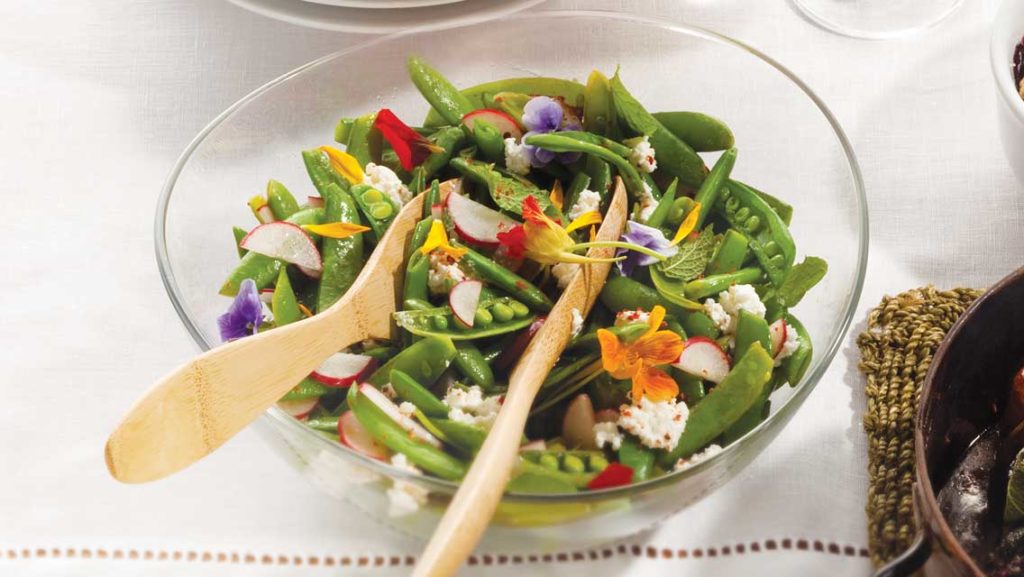
Serves | four
Ingredients
- 1 lb. fresh sugar snap peas
- 1 bunch radishes
- 1/2 cup fresh ricotta cheese
- A few leaves of fresh peppermint
- Salt
- Freshly ground black pepper
- Juice of one lemon
- Olive oil to taste
- Pinch of Aleppo pepper or red pepper flakes
- Handful of edible flowers, such as pea blossoms or nasturtiums
Directions
- Trim the tips of the sugar snap peas on both ends, remove the strings if they bother you, and cut some in half lengthwise.
- Blanch the peas quickly, just about 30 seconds, and shock in ice water.
- Slice the radishes thinly.
- Combine the peas, radishes, cheese and peppermint in a large bowl. Season with salt and pepper and toss with the lemon juice and olive oil.
- Serve with a sprinkle of Aleppo pepper and garnish of edible flowers.
Slow-Roasted Lamb Shoulder
When I was an 18-year-old exchange student in Spain, I remember being in a family winery in Castilla y León, roasting whole lamb for Semana Santa, Holy Week. Castilla y León is the heart of lamb country in Spain, and no festival is complete without lamb roasted over hot coals. I enjoyed the familiar, thick, lanoline smell of it in the early spring air.
The day before, we had stopped at the butcher shop to pick up four whole suckling lambs and brined them overnight with olives, herbs and preserved lemons. Every time I have roast lamb, I think of that incredible Easter Sunday, my first of many memorable Easters in Spain.
If you can’t get lamb shoulder, leg of lamb will work nicely; just cook it a little longer.
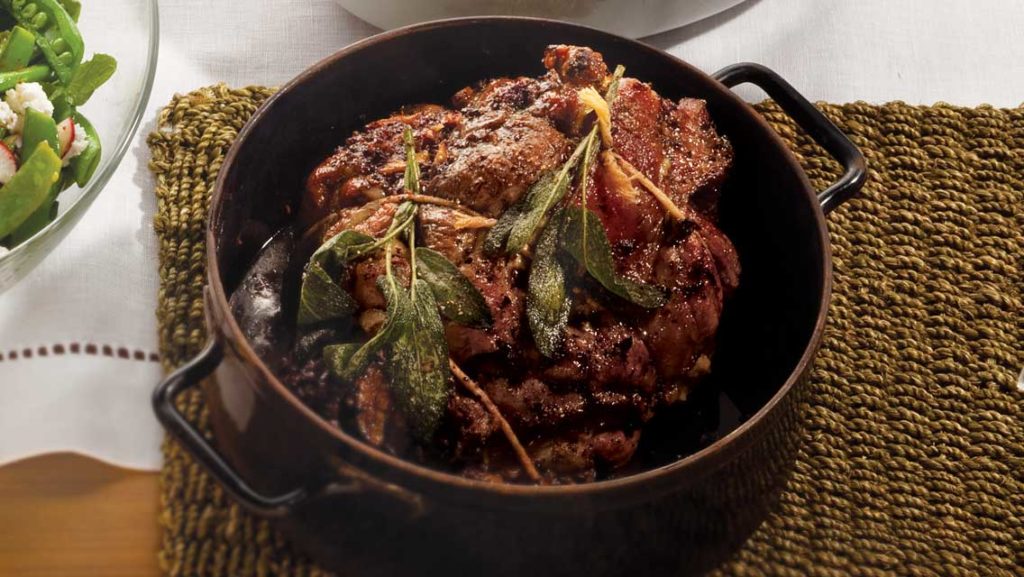
Serves | six
Ingredients
- 1 cup good-quality black olives, pits removed
- 6 slices quick-cured lemons (see Video Extra! to learn how to prepare them) or purchased preserved lemons
- 4 cloves garlic, peeled and lightly crushed
- Generous handful of mixed fresh herbs, like rosemary, oregano, sage, parsley, and/or thyme
- ½ cup good olive oil
- 1 lamb shoulder, roughly 4 to 6 lbs., deboned
- Salt and freshly ground black pepper
Directions
- In a large mortar and pestle or in a food processor, work together the olives, cured lemons, garlic, herbs and olive oil to create a nice, rustic paste. If you’re using a food processor, be careful not to overprocess it; you want the paste a bit coarse.
- Spread the deboned lamb shoulder flat on a cutting board. Use a sharp knife to open up any connecting meat and form a nice square. Rub the lamb all over with the paste, roll it up and truss it with butcher’s twine every inch and a half. Refrigerate the lamb for a few hours or overnight to allow all the flavors to come together.
- Remove the lamb from the refrigerator and let it come to room temperature, about
45 minutes. Preheat the oven to 300 degrees F. - Season the lamb with salt and pepper and place it on a rack fitted in a roasting pan. Roast for one to 1.5 hours, until it reaches an internal temperature of about 148 degrees F. Baste the lamb every 20 minutes or so. Once the lamb is done, set it aside in a warm place to rest for 10 minutes before serving and slicing.
Blackberry and Almond Crumble
When I buy plump, tart blackberries at the farmers’ market, I usually devour them before I make it home. When I manage to save a few, I make this crumble. I like my desserts to be simple (mostly because I’m not much of a pastry chef and I don’t want to screw them up). Chopped almonds (I like to use Marconas) give the topping a great little crunch and, along with the berries, offset the pro-inflammatory effects of the sugar.

Serves | four
Ingredients
- 1 cup rolled oats
- 3/4 cup sugar
- 1 cup almond flour
- 1/4 teaspoon baking soda
- Couple pinches of salt
- 3 tbs. butter
- 1/2 cup almonds, preferably Marcona, chopped
- 3 cups fresh blackberries
- Zest of 1/2 orange
- Juice of one orange
- 1/2 teaspoon ground cinnamon
Directions
- Preheat the oven to 375 degrees F. Combine the oats, 1/4 cup of the sugar, the almond flour, baking soda, and a pinch of salt in a food processor and pulse. Add the butter and pulse until combined. Move to a bowl and mix in the chopped almonds.
- Mix the remaining 1/2 cup sugar, the blackberries, orange zest, orange juice, cinnamon and a pinch of salt, and arrange in a baking dish.
- Spread the crumble mixture on top of the berries. Bake for 35 to 40 minutes, until golden and bubbly. Serve alone, or with vanilla or almond ice cream.
(Recipes reprinted with permission from Seamus Mullen’s Hero Food by Seamus Mullen/Andrews McMeel Publishing, LLC.)
This article originally appeared as “Heroic Feast” in the March 2013 print edition of Experience Life.

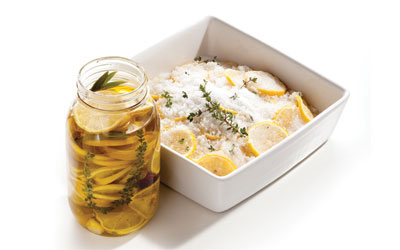
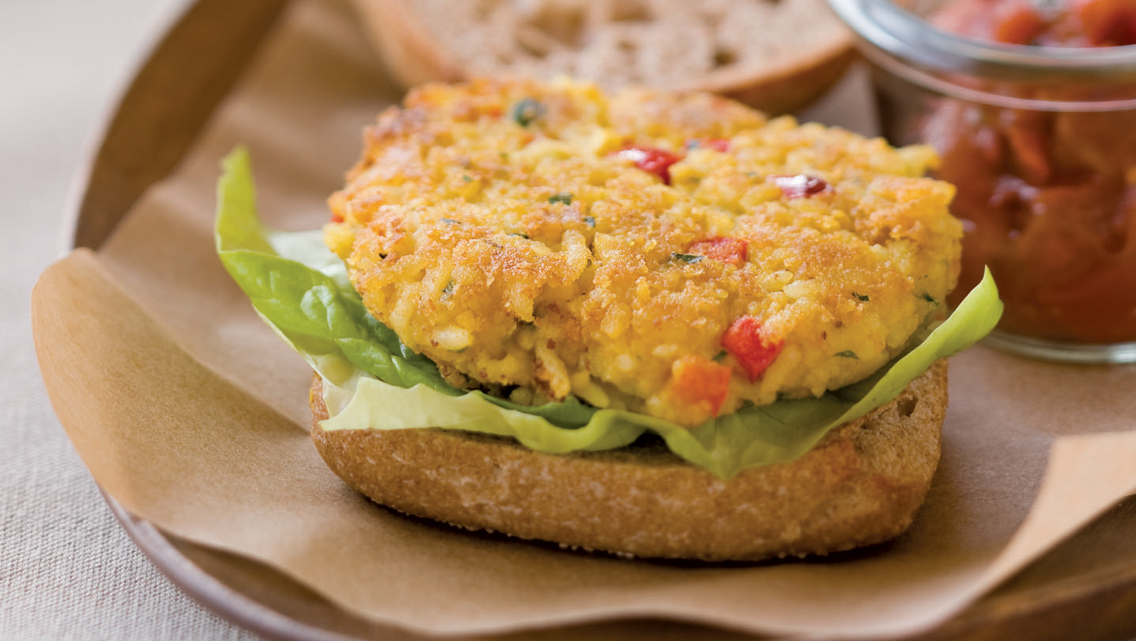
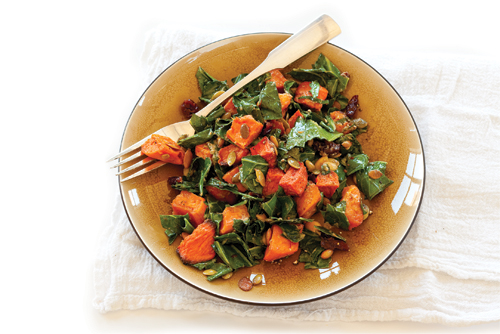
This Post Has 0 Comments